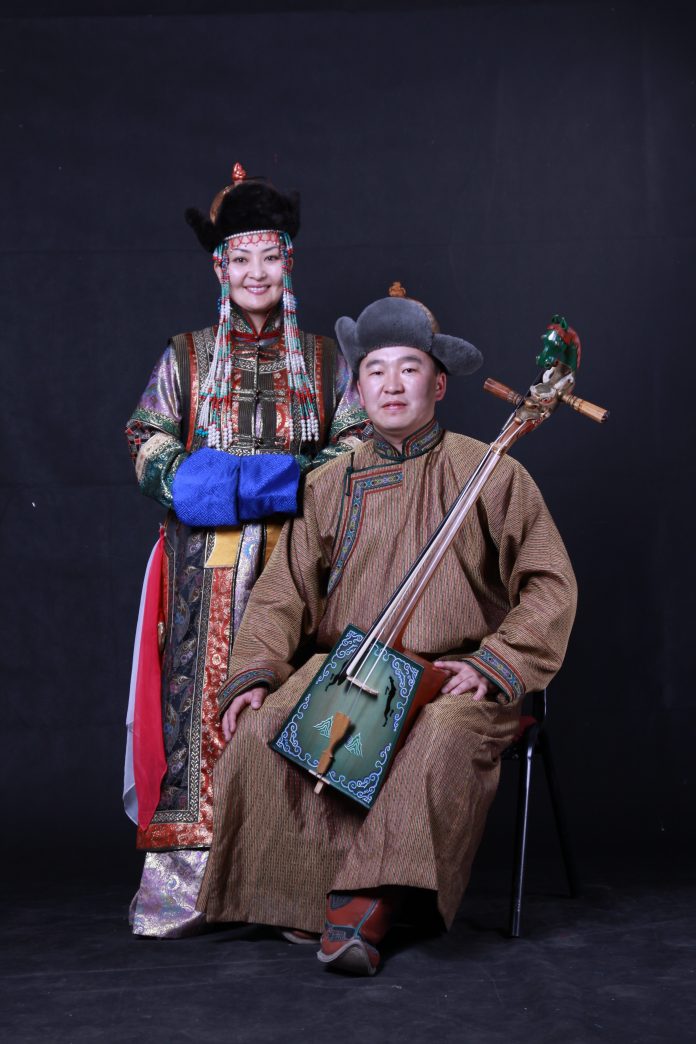This week, Global Strat View sat down with Tenger Khuur Ensemble to hear its journey to promote traditional Mongolian music in the United States.
Mongolian traditional music is known for its unique ability to embody the essence of nature and nomadic life. Beyond mere sounds, Mongolian music resonates as nature itself—dynamic yet tranquil, echoing the vast landscapes and serene beauty of Mongolia’s open steppes. Its reception in the United States has introduced listeners to its rich musical heritage and deepened their appreciation for Mongolia’s cultural depth and natural splendor.
Tenger Khuur Ensemble
In an ongoing attempt to further promote Mongolian culture in the US, efforts like those of the Tenger Khuur Ensemble became increasingly visible.
The Tenger Khuur Ensemble is a distinguished musical school dedicated to preserving and promoting Mongolian music’s rich traditions while fostering global cultural exchange. The ensemble’s work aligns seamlessly with broader US-Mongolia cultural exchange initiatives, fostering mutual understanding through music.
As cultural ambassadors, the ensemble’s founders have played pivotal roles in bilateral relations throughout their careers, performing at prestigious venues and nurturing a deeper appreciation of Mongolian arts among American audiences.

The ensemble noted that the Mongolian-American communities actively support and promote the ensemble’s activities, ensuring the preservation and celebration of Mongolian cultural heritage in the United States. “From the very beginning, the Mongolian-American community supported our ensemble with everything they had, helping us grow and thrive,” the ensemble said. “Now, as a well-established group, we are proud to give back by leading our community in promoting Mongolian culture and art, ensuring its legacy continues to flourish in the U.S. and beyond.”
US-Mongolia Relations
The ensemble sees vast opportunities for expanding the US-Mongolian musical collaborations in the future.
When asked about the role the ensemble can play in terms of the broader US-Mongolia Relations, Bat-Ochir Araanz, horse head fiddle master and co-founder of the ensemble, replied, “Our ensemble’s work is deeply intertwined with the evolving cultural exchange between Mongolia and the United States. Before becoming educators, we were musicians first—artists who had the honor of being among the early cultural delegates to the US 25 years ago, marking the beginnings of Mongolia-U.S. diplomatic relations. Since then, we have returned multiple times as part of the state art delegation, performing at esteemed venues like the Smithsonian.” they said.
Further commenting on the issue, the ensemble shared, “…in those early years, cultural exchange was primarily government-led. Today, we see a broader, more dynamic movement, driven not only by institutions but by Mongolians themselves—many of whom now call the US home, with second and third-generation immigrants carrying forward our heritage. It is inspiring to witness this transformation, and we are honored to contribute to this ever-growing cultural bridge between our two nations.”
Education for the Mongolian Youth
Beyond performances, the ensemble’s educational programs play a crucial role in connecting children with their Mongolian heritage. By integrating music with language and history lessons, they instill a deep sense of pride and belonging among young Mongolian-Americans, ensuring the continuity of their cultural legacy.
Mongolian Americans are a steadily growing Asian American community. According to the US Embassy in Mongolia, since embracing democracy, Mongolia has strengthened its relationship with the United States, which considers Mongolia an important “third neighbor,” and the two nations continue to expand their economic, political, cultural, and educational ties, sharing a commitment to human rights, democracy, and global cooperation.
In its ever-growing expansion, cultural exchange remains pivotal in terms of the sustainable promotion of Mongolians in America. Challenges in blending traditional Mongolian music with international classics are met with innovation, preserving authenticity while adapting to diverse musical contexts and audiences worldwide.
“Mongolian music is so unique that it embodies both vibrancy and peacefulness, a reflection of its breathtaking natural landscapes and nomadic way of life. American audiences have been deeply moved by its ability to capture the essence of nature—the whisper of the wind, the rush of rivers, and the vastness of the open steppe.” Bolormaa Badam, co-founder of the ensemble and music instructor, said, “More than just sound, Mongolian music is nature itself—untamed, rhythmic, and deeply resonant. In a fast-paced world, it offers both energy and tranquility, and we see it is drawing American listeners into the harmony of a land where movement and stillness exist in perfect balance….”
More Than a Simple Musical School
The Tenger Khuur Ensemble is a living bridge between past and future, between Mongolia and the world. With every note they play, the whispers of the wind across the steppe and the unbreakable spirit of a people whose culture has endured for centuries are felt worldwide.
Their music is not just heard—it is felt, stirring something deep in the hearts of those who listen, whether they are Mongolian-born or discovering its beauty for the first time. Their dedication to preserving tradition while embracing new artistic horizons ensures that Mongolia’s soul continues to resonate across borders and generations. As they stand on the world’s stage, they do not merely perform—they remind the globe of all of the power of heritage, the strength of unity, and the profound ability of music to transcend time, distance, and language.
The ensemble envisions a vibrant future in promoting Mongolian culture on a global scale. With enthusiasm and dedication, they aim to expand their reach, fostering greater appreciation and understanding of Mongolian arts across continents, thereby enriching the global cultural tapestry with the timeless beauty of Mongolian music.

Se Hoon Kim
Se Hoon Kim is the Assignment Editor and Senior Correspondent, East and South Asia at Global Strat View. He is also a columnist for the Sunday Guardian.









